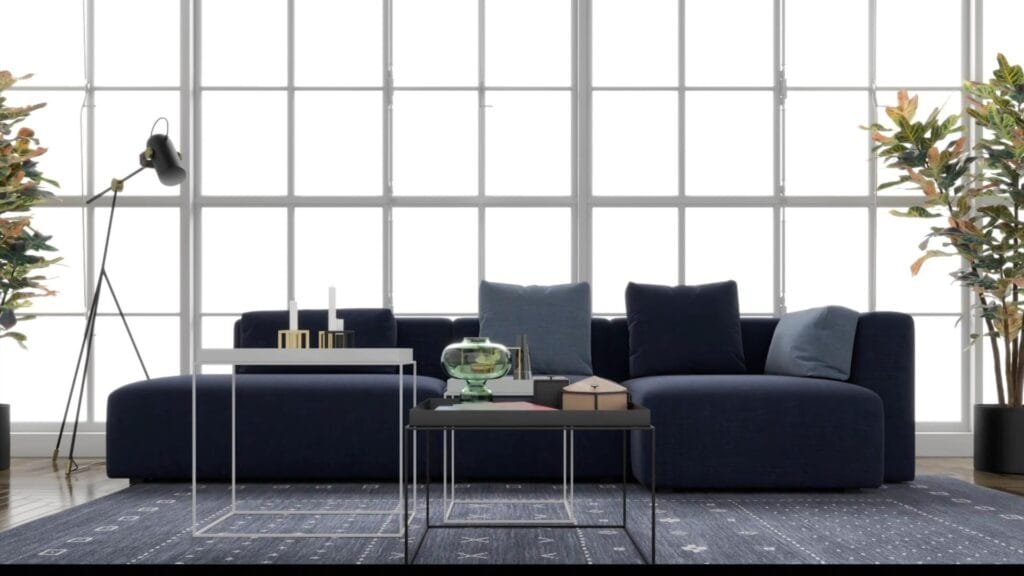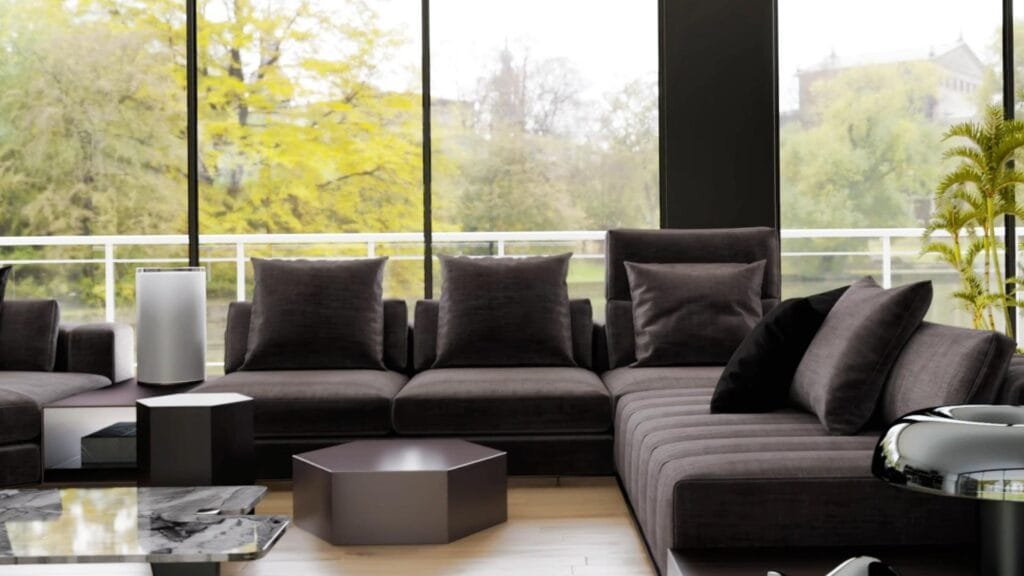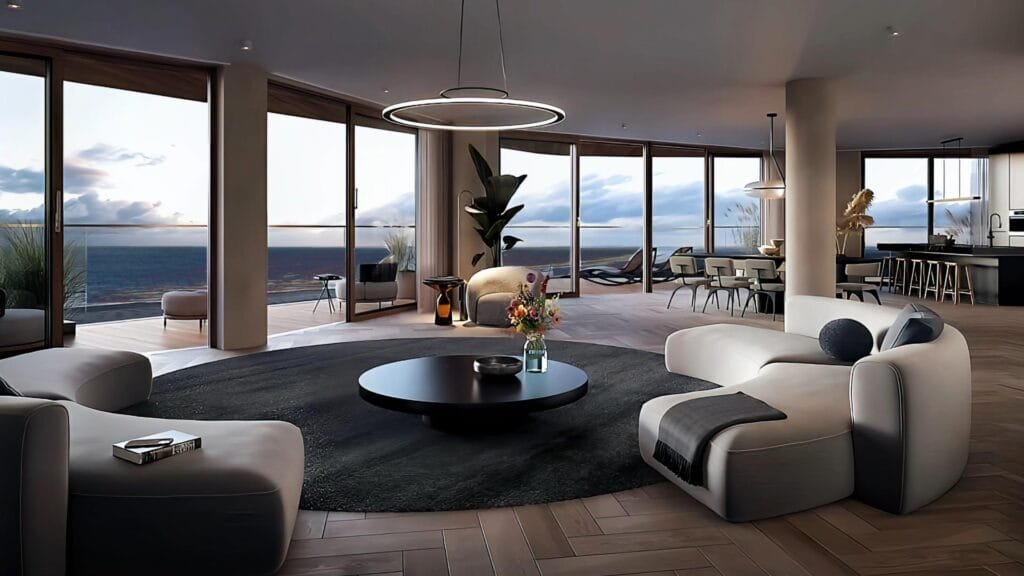Discover the charm of low-profile furniture and how it can transform your living space. With its unique height and minimalist design, low profile pieces create an airy atmosphere and enhance comfort in contemporary settings. Originating from Japanese design aesthetics, this furniture style promotes a clutter-free environment and adapts beautifully to various decor themes, including Scandinavian and bohemian. Explore the benefits of low-profile furniture, key characteristics, and tips for selecting and arranging these stylish pieces to elevate your home’s decor while maintaining functionality.
Introduction to Low Profile Furniture
Low profile furniture is characterized by its lower height design, typically ranging from just a few inches off the ground to about 18 inches. This distinct feature contrasts sharply with traditional furniture styles that usually elevate seating and surfaces, creating a more dominant presence in a room. Originating from various global design influences, low profile furniture has gained popularity within modern interior design, particularly in living room spaces.

The roots of low-profile furniture can be traced back to Japanese aesthetics, which emphasize simplicity, minimalism, and a close connection to the floor. This approach is reflected in traditional Japanese furniture, wherein components like tatami mats and low tables encourage a grounded experience. Over the years, these elements have been adopted and adapted by various cultures, leading to a renewed appreciation for the understated elegance and functionality of low-profile pieces.
Please read our article watch the newly uploaded video from our YouTube channel:
“Grig Stamate – Interior Design Solutions”
https://www.youtube.com/@GrigStamate
DESIGN TRENDS – Low-Profile Furniture [What to Expect in the Upcoming Years], #2 (video)
Here, you can see other related videos from our channel:
DESIGN TRENDS – Unique Accent Walls [What to Expect in the Upcoming Years], #1 (video)
Chill Vibes for Creative Spaces, #1: The ART of SHOWING ART (video)
In contemporary settings, low profile furniture serves multiple purposes. It creates an open, airy atmosphere, making spaces feel larger and more inviting. Additionally, these pieces often promote a casual, relaxed environment well-suited for gatherings and leisure activities. Designers have increasingly incorporated low profile elements into living rooms to achieve balancing aesthetics and practicality. The design encourages conversation by drawing people closer together and allowing for seamless movement throughout the space.
The growing trend of low profile furniture can also be attributed to a shift in consumer preference towards minimalism and decluttering. As more individuals seek to declutter their homes and prioritize simplicity, these low-height designs present an ideal solution. They harmonize effortlessly with various decor styles, from contemporary and mid-century modern to bohemian and Scandinavian, enhancing the versatility and accessibility of modern living spaces.

Benefits of Low Profile Furniture
In recent years, low profile furniture has gained popularity for its numerous advantages in contemporary living spaces. One of the primary benefits is the perception of increased space. Low profile pieces tend to create an illusion of a larger area, making them particularly useful in smaller rooms where maximizing square footage is essential. By keeping the sight lines clear and the visual weight of the furniture lower, these designs help to open up the space, fostering an airy ambiance.
Additionally, the comfort factor is significant when considering low profile furniture. Many of these pieces are designed with ergonomics in mind, providing a relaxed seating experience that encourages a casual, laid-back lifestyle. Sofas and chairs that are closer to the ground often facilitate easier movement, making them particularly appealing for families, young children, or those who appreciate an inviting, cozy atmosphere. By emphasizing comfort, low profile furniture transforms the living room into a welcoming environment.
Moreover, low profile furniture offers versatile styling options that can cater to various lifestyles. For minimalist, modern designs or more eclectic bohemian styles, these pieces adapt effortlessly, accommodating preferences and enhancing the overall aesthetic of a living space. The design simplicity of low profile furniture also means that it can be paired with a variety of decor elements without overwhelming the existing design scheme. As a result, homeowners can effortlessly create a cohesive look that reflects their personal taste.
Incorporating low profile furniture not only enhances the atmosphere of a living room but also promotes an environment that embraces fluidity and comfort. This trend offers myriad possibilities for anyone looking to elevate their interior spaces while maintaining functionality.

Key Characteristics of Low Profile Furniture
Low profile furniture has become an increasingly popular choice for contemporary living spaces due to its unique combination of characteristics that enhance both function and aesthetics. One of the most distinguishing features of low profile furniture is its height. Designed to sit closer to the ground, this type of furniture often creates a sense of spaciousness and openness in a room, making it ideal for small or compact living areas.
In terms of materials, low profile furniture is typically constructed from a variety of options, including wood, metal, and fabric. Wooden pieces often exhibit a sleek, modern design, whereas metal options can contribute an industrial flair. Fabrics used in upholstery may vary greatly, from soft textiles to durable leathers, allowing homeowners to choose options that best suit their personal style and needs. The choice of materials not only affects the aesthetics but also the longevity and functionality of the furniture.
The design aesthetics of low profile furniture often align with minimalist principles. Clean lines, uncluttered surfaces, and simple forms characterize these pieces, reflecting a contemporary style that is both sophisticated and understated. This aesthetic can seamlessly integrate into various interior themes, providing versatility for homeowners seeking to maintain a cohesive look throughout their living spaces.
Functionality is another key aspect of low profile furniture. Many pieces are designed with multi-functional capabilities, serving as space-saving solutions that do not compromise on style. For example, low profile sofas may include built-in storage compartments, while coffee tables can often transform into dining surfaces. The amalgamation of these characteristics not only contributes to the overall ambiance of the living room but also enhances the practicality of the space, making it both stylish and functional.

Design Inspirations with Low Profile Furniture
Low profile furniture has gained significant attention in contemporary interior design, offering versatility and a streamlined aesthetic that can complement various styles, including minimalist, Scandinavian, bohemian, and mid-century modern. These pieces tend to have a more grounded appearance, which can contribute to a spacious and airy feel within the living space.
In minimalist design, low profile furniture is key to maintaining a clutter-free environment. For example, a sleek, low couch paired with a simple coffee table can create an inviting yet unobtrusive focal point in the room. Minimalist designs often employ neutral color palettes and natural materials, allowing low profile pieces to blend seamlessly with the overall space and enhance its serenity.
Scandinavian design, known for its emphasis on functionality and simplicity, also embraces low profile furniture. A low, wooden sofa adorned with cozy textiles can serve as a perfect centerpiece in a Scandinavian living room. The combination of natural elements and clean lines in Scandinavian interiors highlight the beauty of low profile furniture, allowing it to create a unified and harmonious aesthetic.
For those who favor a more eclectic approach, the bohemian style offers numerous opportunities to showcase low profile furniture. Incorporating a low platform bed or a set of low, upholstered chairs surrounded by vibrant textiles can contribute to a warm and inviting atmosphere. Bohemian designs often involve layering different textures and patterns, making low profile pieces a perfect selection for achieving that cozy, lived-in look.
Lastly, mid-century modern design often features low profile furniture that emphasizes organic shapes and functionality. A low-slung sofa with tapered legs can beautifully complement graphic art pieces and statement lighting fixtures typical of this style. This blend of low profile furniture and mid-century elements results in a striking yet balanced aesthetic.
Choosing the Right Pieces for Your Living Room
When selecting low profile furniture for your living room, it is essential to consider several factors to ensure the pieces harmonize with your space while meeting your functional needs. One of the first aspects to evaluate is the dimensions of your room. Measure the area where you plan to place the furniture, taking note of both height and width. Low profile furniture typically features lower heights, which can create an illusion of a more expansive space. Choosing appropriately sized pieces will help maintain a comfortable flow and prevent overcrowding.
Color schemes play a pivotal role in the selection process. The hues of your furniture should complement your overall decor while providing a cohesive look. Neutral tones like beige, gray, or soft pastels can create a serene atmosphere, allowing for easy mixing and matching with other decor elements. However, if you prefer a pop of color, consider adding vibrant cushions or throws that can make low profile sofas and chairs stand out without overwhelming the space.
Balance is crucial when incorporating low profile furniture with existing high-profile items. For example, if you have a tall bookcase or artwork that draws the eye upwards, it is beneficial to contrast these elements with low profile seating options that ground the room. You might consider adding an area rug that ties together the various heights and colors in your space.
When shopping for low profile furniture, look for pieces that possess versatile styles, as they can adapt to varying decor trends. For those inclined towards DIY projects, refurbishing old furniture to achieve a low profile aesthetic can be rewarding. Sanding down and painting a traditional chair or adjusting the legs of a coffee table can create a beautiful modern piece that suits your needs.
Arranging Low Profile Furniture
Arranging low profile furniture can significantly impact the overall aesthetic and functionality of a living room. One effective strategy is to identify a focal point in the space, which could be a fireplace, a large window, or a piece of artwork. Positioning the low profile sofas or seating around this focal point creates a natural gathering area, enhancing the room’s appeal. This arrangement not only promotes a sense of connection among users but also allows for optimal use of natural light, making the space feel airier and more inviting.
Moreover, when arranging your low profile furniture, consider the flow of movement throughout the room. It is essential to leave ample pathways for users to navigate comfortably. A good rule of thumb is to maintain at least 18 inches of space between furniture pieces to facilitate easy movement. This approach is particularly effective in multifunctional spaces, where clear zones for different activities—such as relaxation and entertaining—are necessary. For instance, you might create a cozy reading nook with a low profile armchair paired with a small side table, while leaving space for a central seating arrangement that encourages conversation and interaction.
Creating zones can also be achieved by using area rugs or different lighting options. By placing a rug under your low profile furniture, you visually demarcate the sitting area without the need for partitions. Dimmer lights or lamps can set the ambience for relaxing evenings and can be strategically placed to enhance specific zones. Additionally, incorporating flexible furniture options, such as ottomans that can serve multiple purposes, can further maximize the functionality of the space. These strategies will help ensure that the arrangement of low profile furniture not only optimizes space but also flows harmoniously within the living room environment.
Combining Low Profile Furniture with Traditional Elements
The integration of low profile furniture with traditional decor can result in a truly harmonious living space. The key to fostering this balance lies in the careful selection of textures, colors, and styles that complement both furniture types. Low profile furniture often emphasizes clean lines and minimalist design, making it an excellent counterpoint to the more ornate and bulky characteristics of traditional pieces.
To achieve a cohesive look, consider maintaining a unified color palette throughout the room. Neutral tones, such as beige, gray, or soft pastels, can create a pleasant backdrop that enhances both low profile and traditional furniture. When introducing color, opt for muted shades that can seamlessly integrate with the overall aesthetic. This strategy allows individuals to introduce bold accents, such as cushions or decorative elements, that elevate the existing decor while retaining a sense of balance.
Texture also plays a vital role in merging these two styles. Introducing elements like a plush area rug beneath low profile seating can add warmth and depth to the space. Additionally, incorporating a mixture of materials—such as wood, metal, and fabric—enriches the overall design. For instance, pairing a sleek, low profile sofa with a vintage wooden coffee table bridges the gap between modern and traditional styles effectively.
Moreover, selecting styles that share common features can enhance the overall cohesiveness. Look for low profile pieces that echo the curves or motifs found in traditional furnishings. By choosing accent pieces, like lamps or side tables, that exhibit classic detailing with a modern twist, one can cultivate an eclectic yet refined look. Ultimately, the successful combination of low profile and traditional furniture lies in balancing simplicity with ornate qualities, presenting a sophisticated yet inviting living environment.
Maintenance and Care for Low Profile Furniture
Low profile furniture has gained popularity for its sleek aesthetics and modern appeal. However, to ensure that these elegant pieces remain in optimal condition, proper maintenance and care are essential. Different materials used in low profile furniture, such as wood, fabric, and metal, require tailored cleaning techniques and care instructions to enhance their longevity and appearance.
For wooden low profile furniture, it is crucial to dust regularly using a soft, lint-free cloth to avoid scratches and debris accumulation. To maintain the finish, use a suitable wood polish every few months, making sure to follow the manufacturer’s recommendations. Avoid exposing wooden pieces to direct sunlight or high humidity, as this can lead to warping or discoloration. Additionally, for any spills, promptly wipe them with a damp cloth to prevent staining or water damage.
When caring for fabric low profile furniture, spot cleaning is often the best initial approach. It is important to identify the type of fabric to choose the correct cleaning product. A mixture of mild detergent and water can be effective; however, always perform a patch test in an inconspicuous area first. Regular vacuuming will help in removing dust and dirt from the fabric, while routine steam cleaning can refresh the upholstery. Protecting your furniture with appropriate fabric protectors can also help resist stains and spills.
Metal low profile furniture is generally easier to maintain, requiring less intensive cleaning compared to wood and fabric. A simple wipe down with a damp cloth followed by a dry cloth will suffice for everyday maintenance. For more stubborn stains, a mild detergent can be utilized. Be cautious with abrasive cleaners, as they can scratch the surface. To prevent rust on outdoor metal furniture, it is advisable to apply a coating of wax or a protective sealant regularly.
By implementing these maintenance tips, you can preserve the beauty and functionality of your low profile furniture for years to come. A proactive approach to care will help keep these sleek designs looking as good as new.
Conclusion: Embrace the Low-Profile Trend
In reevaluating our living spaces, the allure of low profile furniture stands out not only for its aesthetic appeal but also for its practicality. This design approach offers a seamless integration of comfort and functionality, allowing for versatile arrangements that adapt to various room sizes and styles. Low profile pieces often create an open and airy feel, which can greatly enhance a living area, making it more inviting and less cluttered. Furthermore, the sleek design can serve as a canvas for personal expression, inviting homeowners to curate their ideal environment.
One of the critical advantages of low profile furniture is its ability to maximize floor space, providing a sense of freedom within a room. This is particularly beneficial in urban settings, where square footage may be limited. By selecting pieces that sit lower to the ground, individuals can draw the eye upward, promoting the illusion of height and spaciousness. Additionally, the modern sensibility associated with low profile designs can elevate the overall decor scheme, marrying form with function in a manner that is both stylish and practical.
Moreover, low profile furniture is often designed with a focus on comfort, featuring plush cushions and ergonomically friendly shapes. This allows for both relaxation and sociability, as the arrangement encourages conversation and connection among occupants. Selecting lower furniture pieces can also provide flexibility in room layouts, enabling one to easily reconfigure spaces for various activities, be it entertaining guests or enjoying quiet moments alone.
As you consider your own living space, embracing the low profile trend can not only enhance its beauty and comfort but also allow for a unique reflection of your personal style. By opting for these innovative furnishings, you will ultimately create a harmonious environment that balances aesthetics with usability.
Other related posts from our website:
Let’s see here, three of them:
https://howtobuildahouseblog.com/design-trends-unique-accent-walls-what-to-expect-for-next-years/
https://howtobuildahouseblog.com/7-stylish-interior-design-trends-to-look-out-for-in-2025/
We also sincerely hope you like our ideas from this post, and you have also enjoyed our uploaded YouTube video.
See you next time at another article.
Thank you so much for your time. Bye now!


